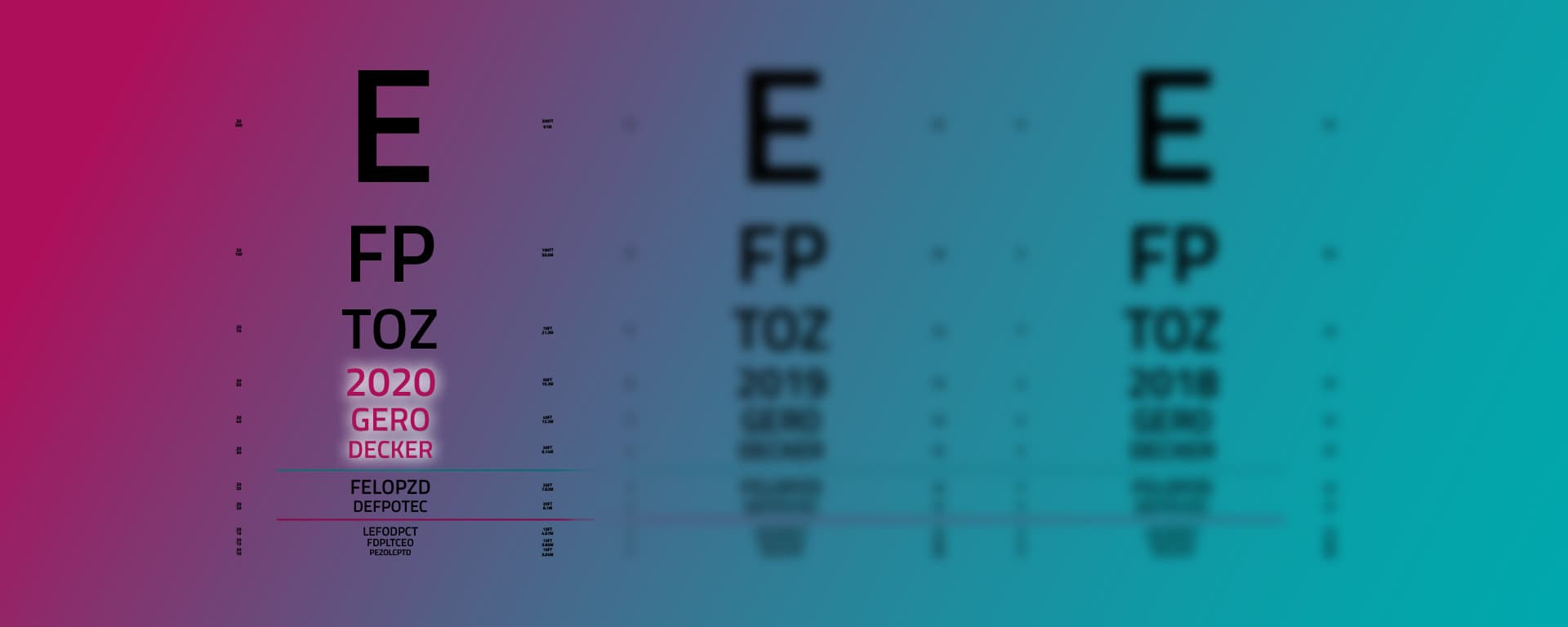<< Rewind after reading
The power of 20/20 vision
Stay. Focused. Since he co-founded Signavio in 2009, Dr. Gero Decker has embraced the velocity of innovation, and been at the forefront of advancing process excellence. Signavio understands that future adaptive technology is necessary, not only to keep up with industry developments, but also to keep pace with the expansion of technology-enabled experiences and Industry 4.0 imperatives.
After all, if a lack of information about existing processes kills 70% of large transformation projects and ~50% of RPA projects, then we must see our way to a better alignment of the discovery, visualization, and analysis of existing data.
Redefining the digital frontier
Focusing on the future of process
As a business and technology futurist, Dr. Decker looks ahead and identifies the most critical and imminent process trends of 2020. The future is… now, and with 20/20 vision, now is sharpened in your favor.
1. The disconnection of customer experience (CX) from operational excellence (OpEx) programs could cost billions of dollars to fix.
To date, most organizations transforming their customer experience strategies have done so in a vacuum. CX teams are set up and linked with chief digital officers and strongly influenced by marketing and revenue teams. Operations are missing from the equation. However, successful companies cannot deliver impactful CX changes without first considering the cost of OpEx!
For example, Home Depot shared a plan to spend $300 million on digital technology so customers could order on their phones and pick up in the store. Six months later, this estimate soared to an actual cost of $1.5 billion to cover the cost of new distribution centers and an overhauled fulfillment process.
Signavio sees this as an easily addressable problem. By viewing customer-centric imperatives through the lens of customer excellence (CEX), the connection between persona, journey, and process is always visible and traceable. Customer excellence ensures a 360° view across the implications of any proposed change.
2. The interest in journey modeling will broaden significantly with impact across many industries.
Customer journeys were a hot topic in 2019, and have penetrated many aspects of business. We expect interest in the value derived from outside-in perspectives will only grow in 2020, with the true potential of journey modeling being realized when business leaders reach beyond the norms of ‘customer-based’ application.
To remain successful, modelers and design thinkers will need to separate the technique of journey modeling from its application. This reassessment will require a significant shift in business thinking. If all journeys are labeled ‘customer,’ then global organizations could be losing advantage by breaking the connection to crucial personas.
For Signavio, the journey modeling technique is important across all personas, not just the customer. This includes patients, citizens, employees, and the end-user. The journey visualization will increasingly identify areas for persona-centric process improvement, while empowering business mapping, change, and operational transformation.
3. In 2020, process mining will break free from the data scientist stranglehold!
The level of interest in process mining in 2019 has been nothing short of amazing. Overall adoption and the value created by process mining initiatives, when undertaken in association with broader modeling efforts, has surpassed expectations. This is due in part to a shift from a scientist-led theoretical problem-solving approach, based on pure process mining, to a more business and objective/insights approach carried out as part of broader transformation and improvement efforts.
2020 will be the year when the ability to deliver these objective-orientated insights to regular business and process management teams will define the process mining market. As a critical technology, process mining in 2020 will achieve growth levels beyond those achieved previously.
4. 2020 will be the year of truth for RPA! Early adopters will struggle to live up to expectations, as they seek updates or the replacement of early robots.
RPA bots are a little like smartphones, one minute you’re buying the latest and greatest, but soon after, you’re faced with lagging tech that hinders your personal or business objectives. We predict that in 2020, early RPA adopters will struggle with the pain of deploying, scaling, and maintaining their bots. This is the year many will realize that RPA isn’t the cure-all for digital transformation!
At Signavio, we’ve already seen the warning signs that early RPA leaders who did not choose a process-centric approach to deployment face significant problems. For them, only the bot knows how it does what it does, and critical information is lost due to disconnects with underlying processes.
With UiPath letting go of hundreds of employees and more and more companies struggling to easily implement RPA at scale, the power of process will be ever more central to RPA success.
… now please, << rewind to 2019 after reading.
The future is never short-sighted
20/20 vision: The future of process in 2020
The upcoming decade will be a year of dramatic change and growth with significant customer excellence (CEX) value. To see how Signavio can help you navigate the future of process, including an increased focus on your customers, contact us or register now for a free 30-day trial.

